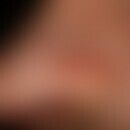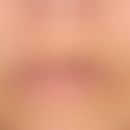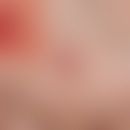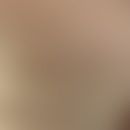Synonym(s)
DefinitionThis section has been translated automatically.
EtiopathogenesisThis section has been translated automatically.
You might also be interested in
ClinicThis section has been translated automatically.
HistologyThis section has been translated automatically.
DiagnosisThis section has been translated automatically.
Differential diagnosisThis section has been translated automatically.
Physiologic (actinic) skin pigmentation: light-emphasized as in argyrosis; the slate-gray aspect of skin discoloration is absent.
M. Addison: Generalized brown hyperpigmentation with accentuation of light-exposed areas (initially indistinguishable from normal sun tan). Furthermore, pigmentation of axillae, nipple, genital area; pigmentation of hand lines, scars, pressure points; gray-brownish mucosal pigmentation (due to increased ACTH and thus simultaneously MSH secretion), mostly porcelain-white nails (negative to surrounding brown skin), more rarely diffuse brown nail pigmentation, loss of secondary hair, tendency to hyperhidrosis.
Cyanosis: Blue-red discoloration; depending on the type of cyanosis, lips and mucous membranes are markedly cyanotic, usually a sign of heart failure.
Argyrosis: brown discoloration of the skin, light accentuated! Medication history. Clinically not easily distinguishable.
Hydrargyrosis: used to be used as a bleaching agent. The use is forbidden.
Icterus: bilirubin increase; yellowing of the sclerae; liver diseases (e.g. hepatitis, liver cirrhosis)!
TherapyThis section has been translated automatically.
Dose reduction, if necessary discontinuation of the therapy. As a precaution, a total amount of 150 mg/kg bw should not be exceeded. The visible pigment (subepidermal gold seam) forms under the influence of sunlight. Textile and physical/chemical sun protection (e.g. Anthelios, Eucerin Sun, see also sunscreen) are therefore an essential part of the therapy.
Successes with the pulsed dye laser (595 nm) have been reported.
LiteratureThis section has been translated automatically.
- Altmeyer P et al (1975) Chrysiasis: Side effect of intramuscular gold therapy. Dermatologist 26: 330-333
- Loddenkemper K et al (2002) Chrysiasis. Z Rheumatol 61: 173-174
- Rütter A et al (1996) Metal dermatoses II. dermatologist 47: 400-409
- Smith RW, Cawley MI (1997) Chrysiasis. Br J Rheumatol 36: 3-5
- Trotter MJ et al (1995) Localized chrysiasis induced by laser therapy. Arch Dermatol 131: 1411-1414
- Yun PL et al (2002) Q-switched laser-induced chrysiasis treated with long-pulsed laser. Arch Dermatol 138: 1012-1014
Incoming links (6)
Chrysosis; Cutis aurantiasis; Dyschromia; Gold dermatitis; Gold rash; Spot darker;Outgoing links (7)
Addison's disease; Argyria; Cyanosis; Dyschromia; Icterus; Light protection; Light stabilizers;Disclaimer
Please ask your physician for a reliable diagnosis. This website is only meant as a reference.




